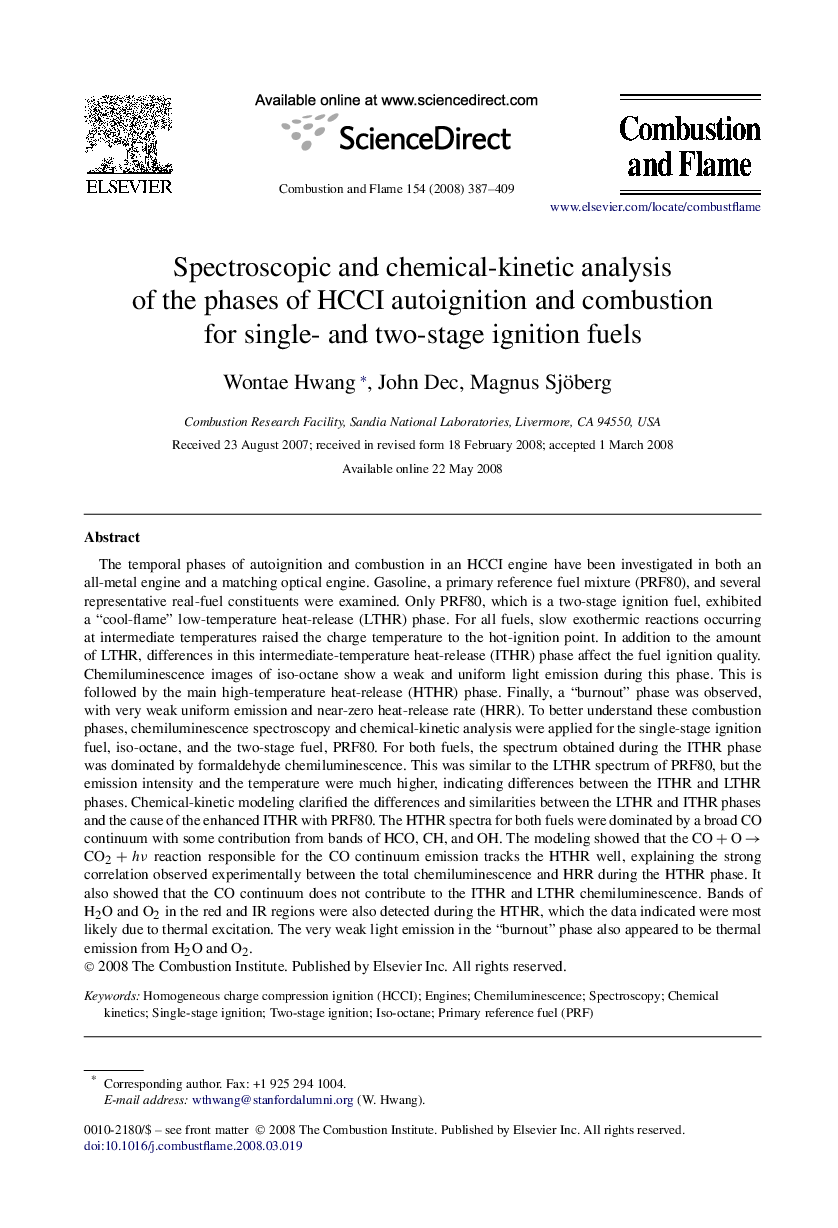| کد مقاله | کد نشریه | سال انتشار | مقاله انگلیسی | نسخه تمام متن |
|---|---|---|---|---|
| 167825 | 457890 | 2008 | 23 صفحه PDF | دانلود رایگان |

The temporal phases of autoignition and combustion in an HCCI engine have been investigated in both an all-metal engine and a matching optical engine. Gasoline, a primary reference fuel mixture (PRF80), and several representative real-fuel constituents were examined. Only PRF80, which is a two-stage ignition fuel, exhibited a “cool-flame” low-temperature heat-release (LTHR) phase. For all fuels, slow exothermic reactions occurring at intermediate temperatures raised the charge temperature to the hot-ignition point. In addition to the amount of LTHR, differences in this intermediate-temperature heat-release (ITHR) phase affect the fuel ignition quality. Chemiluminescence images of iso-octane show a weak and uniform light emission during this phase. This is followed by the main high-temperature heat-release (HTHR) phase. Finally, a “burnout” phase was observed, with very weak uniform emission and near-zero heat-release rate (HRR). To better understand these combustion phases, chemiluminescence spectroscopy and chemical-kinetic analysis were applied for the single-stage ignition fuel, iso-octane, and the two-stage fuel, PRF80. For both fuels, the spectrum obtained during the ITHR phase was dominated by formaldehyde chemiluminescence. This was similar to the LTHR spectrum of PRF80, but the emission intensity and the temperature were much higher, indicating differences between the ITHR and LTHR phases. Chemical-kinetic modeling clarified the differences and similarities between the LTHR and ITHR phases and the cause of the enhanced ITHR with PRF80. The HTHR spectra for both fuels were dominated by a broad CO continuum with some contribution from bands of HCO, CH, and OH. The modeling showed that the CO+O→CO2+hνCO+O→CO2+hν reaction responsible for the CO continuum emission tracks the HTHR well, explaining the strong correlation observed experimentally between the total chemiluminescence and HRR during the HTHR phase. It also showed that the CO continuum does not contribute to the ITHR and LTHR chemiluminescence. Bands of H2O and O2 in the red and IR regions were also detected during the HTHR, which the data indicated were most likely due to thermal excitation. The very weak light emission in the “burnout” phase also appeared to be thermal emission from H2O and O2.
Journal: Combustion and Flame - Volume 154, Issue 3, August 2008, Pages 387–409